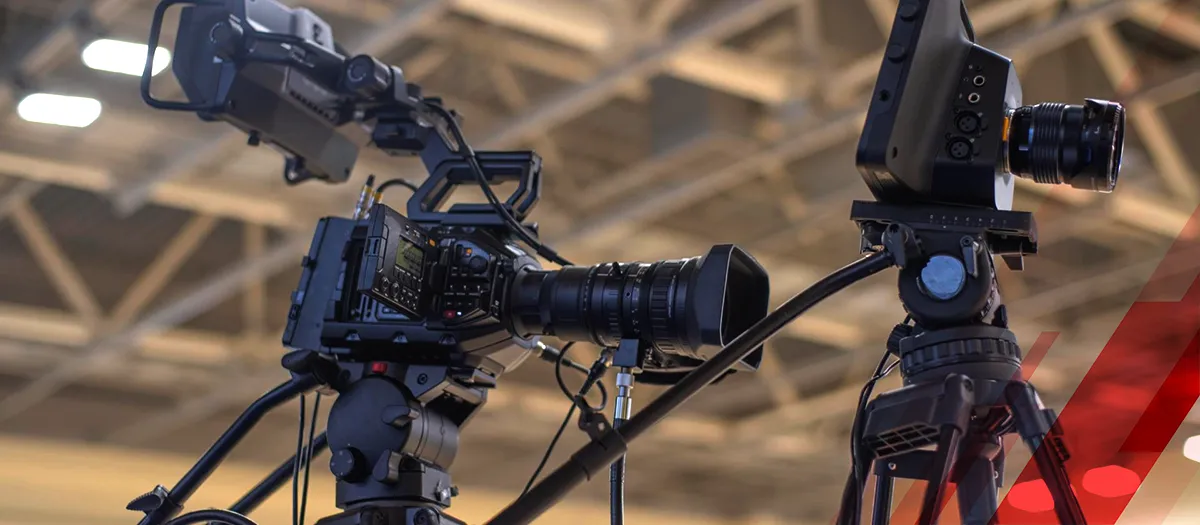In today's digital age, the demand for high-quality broadcasting has skyrocketed. Whether it's live sports events, news coverage, or entertainment shows, viewers expect crisp visuals and immersive experiences. However, achieving such excellence requires the right tool - the broadcasting camera. The problem lies in capturing and transmitting live events with exceptional clarity, ensuring that viewers feel like they are part of the action. Standard cameras may not possess the necessary capabilities to deliver the desired level of detail, making it essential to invest in specialized broadcasting cameras. Let's dig deeper into it.
What is a Broadcasting Camera?
A broadcasting camera, also known as a professional video camera, is a high-end device used for creating electronic moving images. Originally developed for television studios and outside broadcast trucks, these cameras are now utilized in various fields such as music videos, direct-to-video movies, corporate and educational videos, and more
According to Kings Research, the global broadcasting camera market is projected to reach a valuation of USD 2,762.5 billion by 2030. These cameras are designed to deliver exceptional image quality, color accuracy, and low-light performance. They are equipped with advanced features and controls that cater specifically to the demands of professional broadcasting. These cameras can capture and transmit live events with stunning clarity, ensuring an immersive visual experience for viewers.
Which Camera is Best for Broadcasting?
Determining the best camera for broadcasting can be subjective and dependent on specific needs and budget. However, based on the search results, here are some cameras that are often recommended for broadcasting:
- Sony PXW-Z450: This camera offers exceptional performance for instant and high-quality live broadcasting. It provides 4K image quality, superior color reproduction, and impressive low-light performance.
- Blackmagic URSA Broadcast: Known for its versatility, this camera features an interchangeable lens mount, a 4K sensor, and broadcast-level connectivity. It is a popular choice for professional broadcasting.
- Canon XF705: This camera offers 4K capabilities, advanced autofocus, and HDR recording. It provides excellent image quality and is suitable for various broadcasting scenarios.
- Grass Valley LDX 86N: Specifically designed for sports broadcasting, this camera offers high frame rates, exceptional zoom capabilities, and advanced image processing. It ensures the capture of fast-paced action with precision.
- Panasonic AK-UC4000: This camera delivers 4K image quality, excellent color reproduction, and high dynamic range. It is commonly used in broadcasting, including sports events.
It's important to note that the best camera for broadcasting may vary depending on individual requirements, budget, and specific broadcasting scenarios. It is recommended to thoroughly research and compare different camera models, considering factors such as image quality, low-light performance, connectivity options, and budget constraints, before making a decision.
Advantages of Broadcasting Cameras
Broadcasting cameras offer several advantages that make them essential tools for professional broadcasting.
- Superior Image Quality: These are designed to deliver exceptional image quality, capturing details with precision and clarity. They often feature larger sensors, allowing for better color reproduction, improved dynamic range, and reduced noise levels.
- Advanced Controls: These provide a wide range of manual controls, allowing operators to fine-tune settings such as exposure, focus, white balance, and more. This level of control ensures optimal image capture in various lighting conditions and environments.
- Low-Light Performance: They are equipped with advanced sensor technology and image processing capabilities, enabling them to perform well in low-light situations. This ensures clear and detailed footage even in challenging lighting conditions.
- Versatile Lens Options: These often support interchangeable lenses, providing flexibility to adapt to different shooting scenarios. This allows operators to choose lenses that suit their specific needs, whether it's capturing wide-angle shots, telephoto zoom, or achieving a shallow depth of field for a cinematic look.
- Connectivity and Integration: These offer enhanced connectivity options, allowing seamless integration with broadcasting systems and workflows. They can be easily connected to external devices such as monitors, recorders, and live-streaming equipment, enabling efficient production and distribution of content.
- Specialized Features: These may include specialized features tailored to the needs of professional broadcasting. These features can include genlock synchronization, timecode support, remote control capabilities, and more, facilitating smooth coordination in multi-camera setups and live production environments.
- Reliability and Durability: Broadcasting cameras are built to withstand the demands of professional use. They are designed to be durable, reliable, and capable of withstanding extended periods of operation, making them suitable for continuous broadcasting applications.
How to Choose the Right Broadcasting Camera?
When choosing the right broadcasting camera, it's important to consider several factors. While the search results provide a range of insights, here's a general guide on how to choose the right broadcasting camera:
- Determine Your Budget: Set a realistic budget for your camera purchase. This will help narrow down your options and ensure you choose a camera that aligns with your financial capabilities.
- Assess Your Needs: Consider the specific requirements of your broadcasting projects. Determine the type of content you'll be producing, the environments you'll be working in, and the level of control and features you require.
- Image Quality: Look for a camera that offers excellent image quality. Consider factors such as resolution (4K or 1080p), color accuracy, dynamic range, and low-light performance. Higher-end cameras often provide superior image quality.
- Connectivity Options: Evaluate the connectivity options of the camera. Ensure it has the necessary ports and interfaces to connect to external devices such as monitors, recorders, and live-streaming equipment. This will enable seamless integration into your broadcasting workflow.
- Lens Compatibility: Consider the lens options available for the camera. Interchangeable lens systems provide versatility and allow you to adapt to different shooting scenarios. Assess the availability and quality of lenses compatible with the camera.
- Ergonomics and Durability: Look for a camera that is comfortable to handle and operate for extended periods. Consider the build quality and durability of the camera, especially if you'll be working in demanding environments.
- User-Friendly Interface: Evaluate the camera's user interface and controls. Ensure they are intuitive and easy to navigate, allowing for efficient operation during live broadcasts.
- Research and Compare: Read reviews, compare specifications, and seek recommendations from industry professionals. This will provide valuable insights into the performance and reliability of different camera models.
Final Takeaway
The broadcasting camera stands as an indispensable tool for professional broadcasting, offering a wide array of advantages that elevate the visual experience for viewers. With their superior image quality, advanced controls, and impressive low-light performance, these cameras capture and transmit live events with exceptional clarity and precision.




